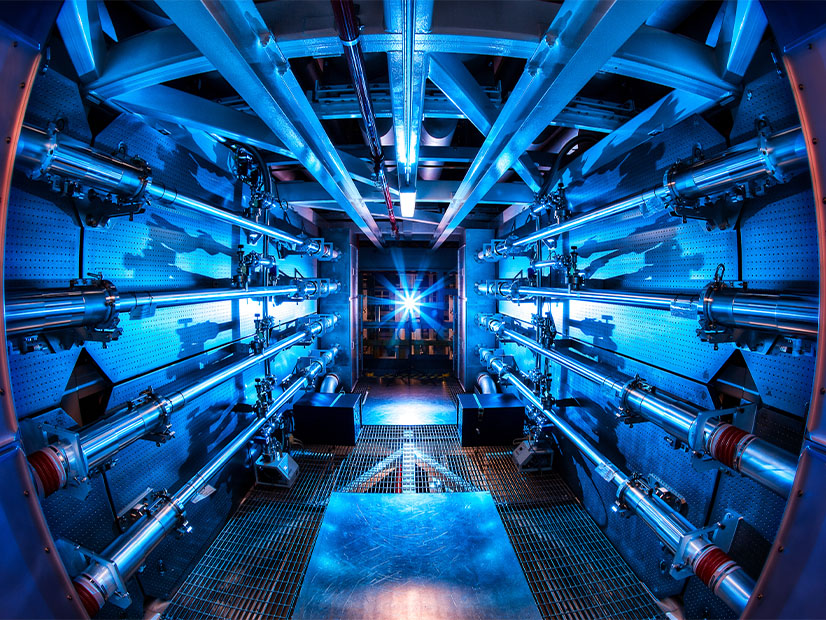
The Department of Energy is expected to announce Tuesday that scientists at the Lawrence Livermore National Laboratory have produced a nuclear fusion reaction that for the first time releases more energy than used to set off the process.
Fusion — fusing hydrogen into helium — is the process that powers the sun. Scientists have long chased the dream of harnessing the process to produce a net energy gain.
What’s new in this lab experiment is that the scientists used the pressure of rapidly pulsing laser blasts rather than magnetic fields to control the resulting super-heated plasma of hydrogen isotopes.
And they found that the process released more energy than used to produce the pulses.
The lasers used, said to be the most powerful in the nation, focused on a BB-sized pellet made of deuterium and tritium, two hydrogen isotopes, according to preliminary reports.
“This is like taking the first step in a child’s life,” said Andrew Sowder, senior technical executive at the Electric Power Research Institute (EPRI).
“It’s the first step. It’s not enough to make a practical source of energy. You’ve got to get much more out than you put in to make it economically worthwhile.
“You’ve got to prove that you can get more energy out than you put in. That is really what this step is. And no one else has done this before,” he said.
The success does not mean utilities will be able to build fusion reactors tomorrow, or anytime soon, he added, comparing the achievement to NASA’s early efforts to put astronauts in orbiting capsules, the first steps to sending astronauts to the moon and later building the space station.
There are a number of privately funded efforts competing to achieve the same results, though none have yet done what LLNL has done. The lab’s initial mission was research for thermonuclear weapons.
But on Monday, just a day before the planned DOE announcement, the Canadian company General Fusion announced it had achieved a milestone: controlling the superheated plasma with compression alone for brief periods rather than with magnetic fields.
The success of the federal lab experiments is likely to energize the private sector as well, especially given the federal research funds available.
In October, DOE awarded $47 million to scientists working on fusion designs using powerful magnetic fields to control the plasma in which fusion can occur. DOE’s Advanced Research Projects Agency-Energy (ARPA-E) and Office of Science–Fusion Energy Sciences were funding 14 fusion research projects as of September.
The intensity of the research efforts and the public and private funding has convinced EPRI that now is the time to prepare for fusion reactors that might be built in the future.
“We have been scouting fusion for the last decade or so, scouting like you do looking for baseball talent,” Sowder said. “There are a lot of private sector developers out there. We are beginning to talk to them about working collaboratively.”
Among the promises of fusion is that it can produce carbon-free energy without the nuclear waste created by nuclear fission.


